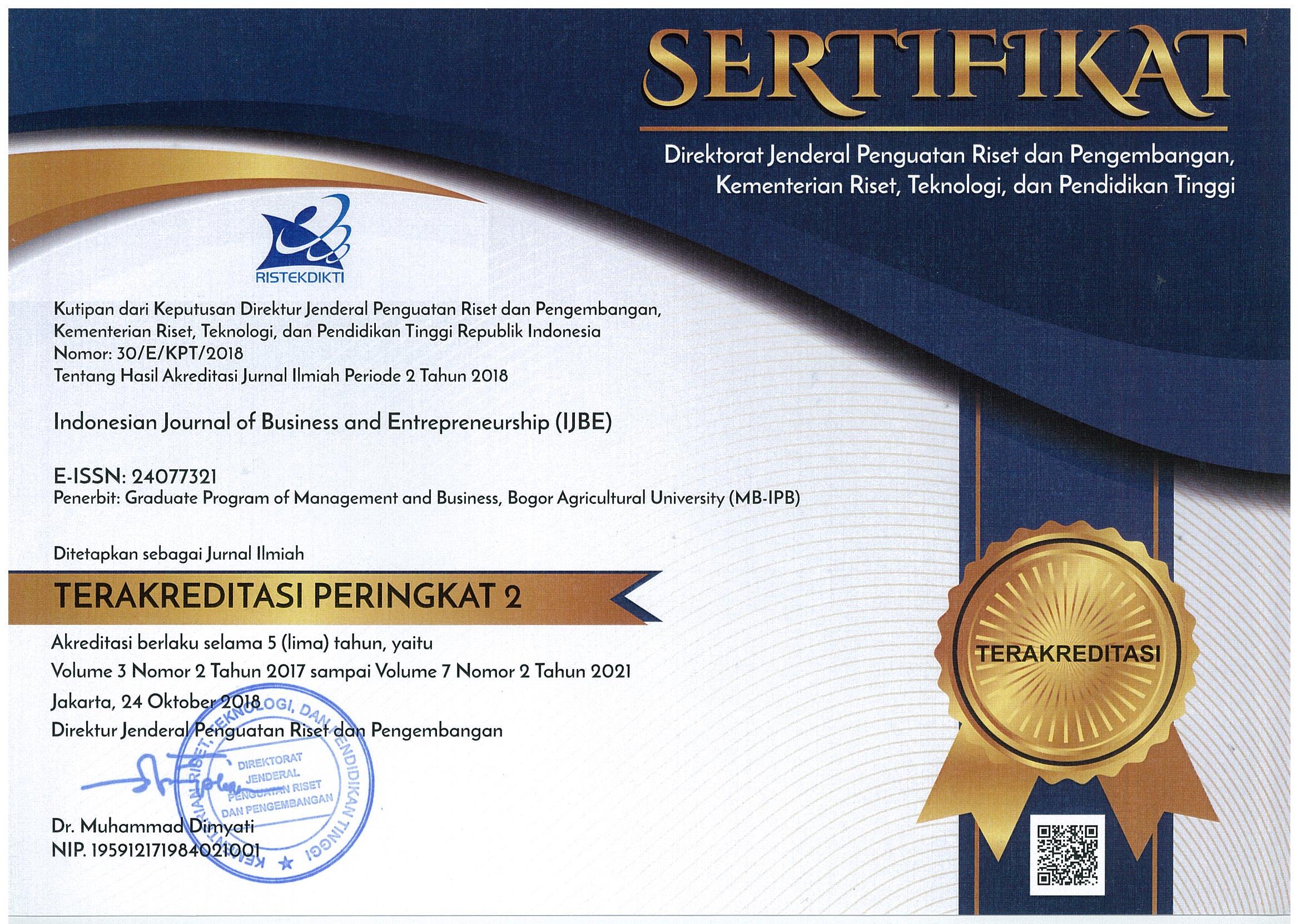The Evaluation of Customer Satisfaction Survey Follow-Up in LPPOM MUI
Abstract
Customer satisfaction survey is a standard method used by service providers in order to obtain feedback from the customer as well as close the gap between customer expectation and perception of service quality. Feedback from customers can make them possible to define the level of quality of service by themselves. If a service provider can satisfy its customers, it means that it will retain its customers. LPPOM MUI, as an authorized halal certifying body in Indonesia, has conducted a customer satisfaction survey three times from 2015 up to 2017. After conducting the survey, LPPOM also performed a follow-up based on the result of the survey. The purposes of this research are (1) to get to know about the follow-up of customer satisfaction evaluation of LPPOM MUI, (2) to analyze the impact of the follow-up implementation progress versus re-evaluation by LPPOM MUI’s customer group on the follow-up, (3) to provide recommendation(s) if the customers perceive the follow-up implementation still does not fulfill their service quality expectation. The methods used were a qualitative analysis based on the follow-up of LPPOM MUI’s customer satisfaction survey versus re-evaluation on LPPOM MUI’s seven customer groups on the follow-up. The result shows that all quality service attributes need improvement to meet customer expectations. They are namely 1) the ease of contacting the Call Center 14056 or LPPOM MUI, 2a) The availability of notification if any change or dysfunction of CEROL SS-23000 and 2b) replying time to customer email (3a) Dealing time to halal certification process (3b) dealing time to post-audit stage (3c) Dealing time to LPPOM MUI approval of new material of the company.
Keywords: service quality, customer satisfaction survey, follow-up, LPPOM MUI, re-evaluation
Downloads
References
Barnes SJ, Vidgen RT. 2002. Assessing e-commerce quality with WebQual: an evaluation of the usability, information quality, and interaction quality of internet bookstores. Journal of Electronic Commerce Research. 3 : 114-127.
Bauer HH, Falk T, Hammerschmidt M. 2006. eTransQual: A transaction process-based approach for capturing service quality in online shopping. Journal of Business Research. 59 : 866-875
de Ruyter K, Wetzels M, Kleijnen M. 2001. Customer Adoption of E-Service: An Experimental Study. International Journal of Service Industry Management. 12 (2):184-207.
Francis JE, White L. 2002. Exploratory and confirmatory factor analysis of the Perceived Internet Retailing Quality (PIRQ) model. Proceedings of ANZMAC 1 January 2002. Deakin University Australia.
Grunwald G, Hempelmann B. 2010. Impacts of reputation for quality on perceptions of company responsibility and product-related dangers in times of product-recall and public complaints crises: results from an empirical investigation. Coorporate Reputation Review. 13(4) : 264-283
Hesselbein F, Goldsmith M, Beckhard, R. 1996. The Drucker Foundation: The Leader of the Future. Jossey-Bass, San Francisco.
Irawan, H. 2003, Indonesian Customer Satisfaction. PT. Elex Media Komputindo, Jakarta.
Jayawardhena C, Foley P. 2000. Changes in the banking sector – the case of Internet banking in the UK. Electronic Networking Applications and Policy. 10(1) : 19-31
Law R, Leung R. 2000. A study of airline’s online reservation service on the Internet. Journal of Travel Research. 39(2): 202-211.
Lee GG, Lin HF. 2005. Customer perceptions of e-service quality in online shopping. International Journal of Retail & Distribution Management. 33(2/3) : 161-176.
Lin HF. 2007. The impact of website quality dimensions on customer satisfaction in the B2C e-commerce context. Total Quality Management and Business Excellence. 18(4) : 363-378
Liniere M. 2013. Factors that contribute to the decline of customer satisfaction in banking [disertasi]. Minnesota (US): Walden University.
Liu CT, Guo YM, Lee CH. 2011. The effects of relationship quality and switching barriers on customer loyalty. International Journal of Information. Management. 31: 71- 79.
Loiacono ET, Watson RT, Goodhue DL. 2002. WebQual: A measure of website quality. American Marketing Association Conference Proceedings : 432-438.
[LPPOM MUI]. 2018. Laporan Tahunan Kinerja LPPOM MUI. Dokumen internal LPPOM MUI (tidak dipublikasikan). Bogor (ID) : LPPOM MUI Pusat
Parasuraman A, Zeitham V, Berry L. 1988. SERQUAL : a multiple item scale for measuring customer perception of service quality. Journal of Retailing. 64(1) : 12-40.
Parasuraman A, Zeitham V, Malhotra A. 2005. E-S-QUAL : a multiple item scale for assessing electronic service quality. Journal of Service Research. 7(3) : 213-230.
Santos, J. 2003. E-service quality : a model of virtual service quality dimensions. Managing Service Quality. 13(3) : 233-246.
Sumarwan U. 2003. Perilaku Konsumen. Ghalia Indonesia, Jakarta.
Szymanski DM, Hise RT. 2000. E-satisfaction : an initial examination. Journal of Retailing. 76 : 309-322.
Wolfinbarger M, Gilly MC. 2003. eTailQ: dimensionalizing, measuring and predicting etail quality. Journal of Retailing 79 (3) : 183-198
Yang Z, Fang X. 2004. Online service quality dimensions and their relationship with satisfaction : a content analysis of customer reviews of securities brokerage services. International Journal of Service Industry Management. 15(3): 302-326.
Yang Z, Jun M. 2002. Consumer perception of e-service quality: from internet purchaser and non-purchaser perspectives. Journal of Business Strategies. 19 (1) : 19-41.
Zeitham V, Parasuraman A, Malhotra, A. 2002. An emperical examination of the service quality-value-loyalty chain in electronic channel. Working Paper. University of North Carolina.








